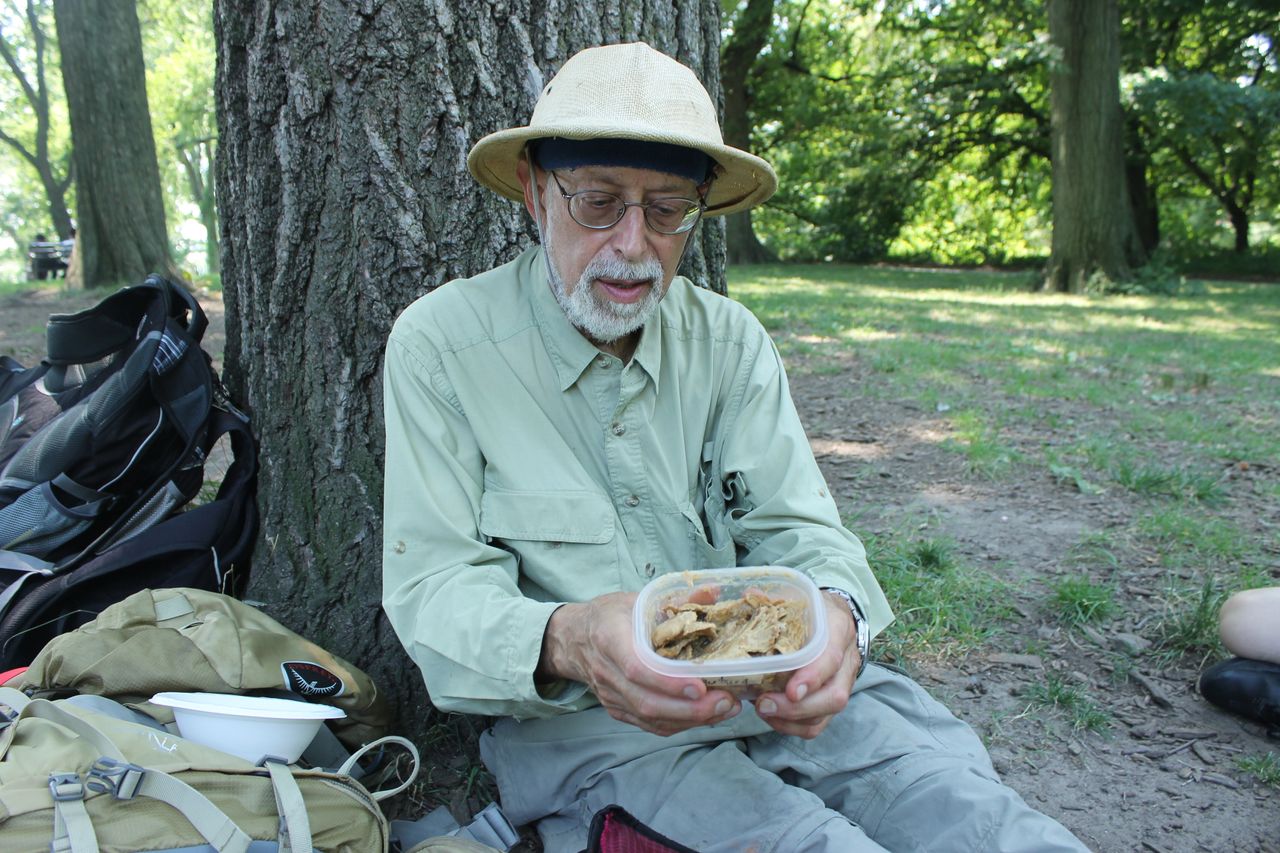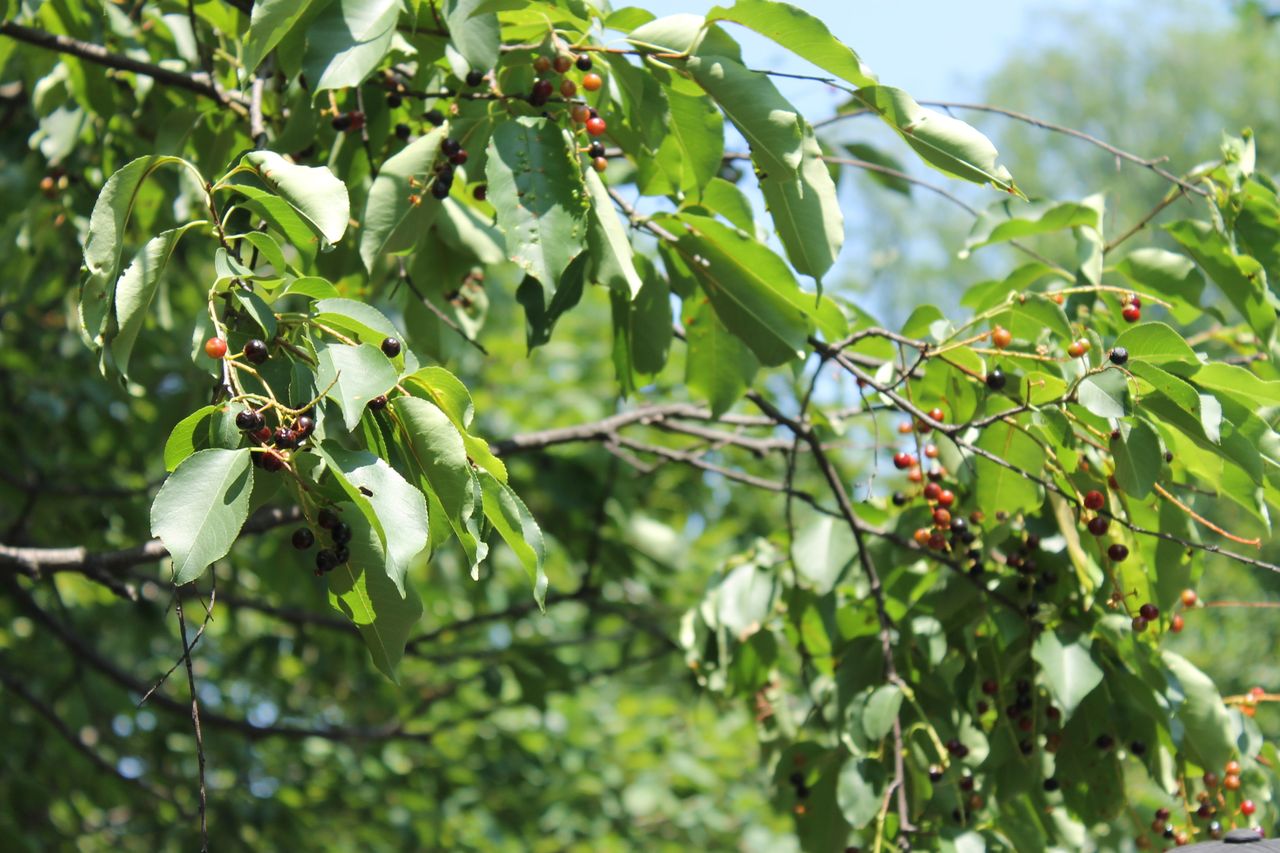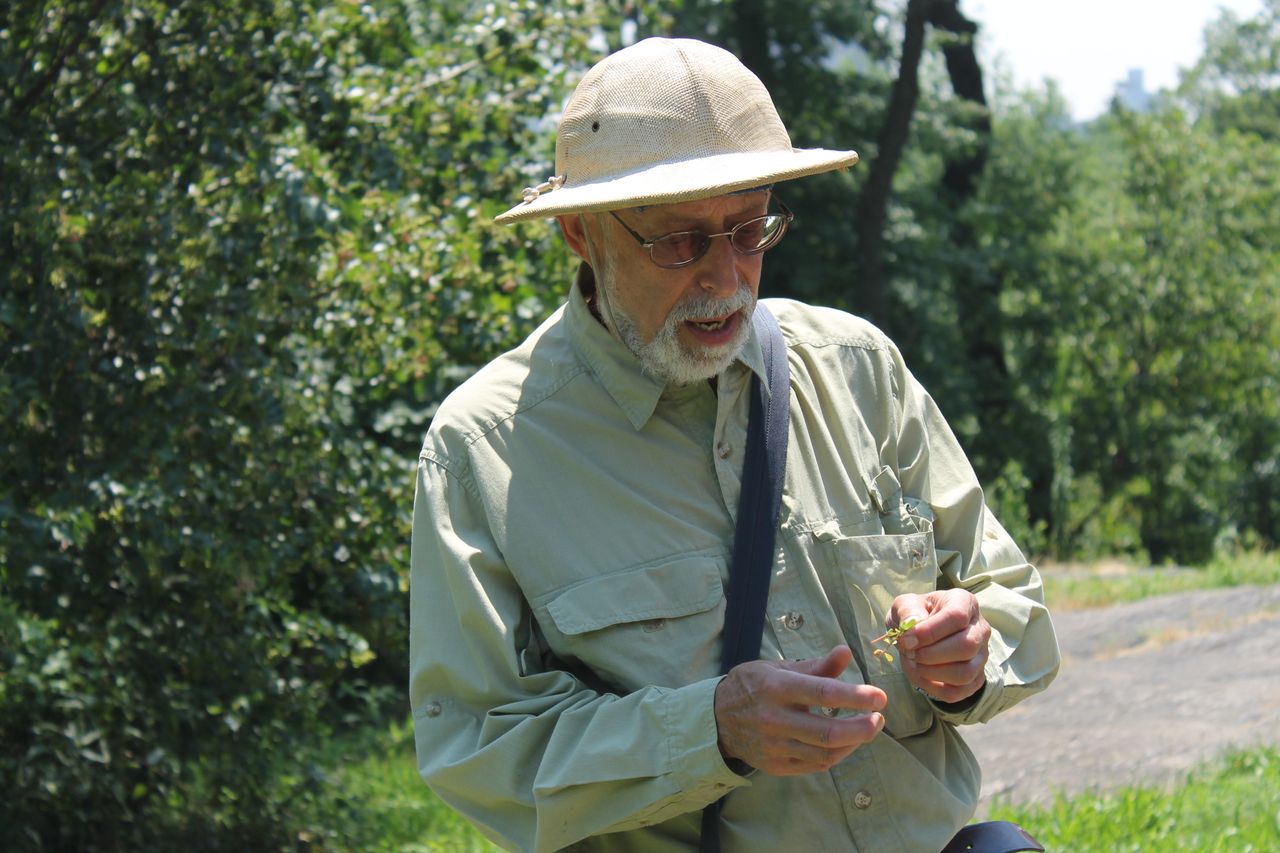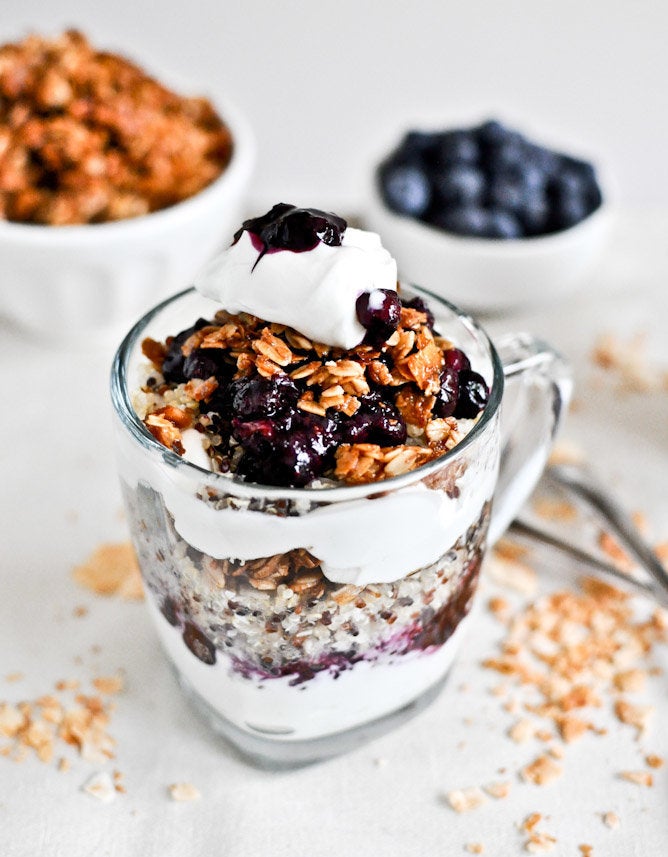When “Wildman” Steve Brill hankers for a fresh meal, he doesn’t go to Whole Foods. Instead, he heads to one of New York City’s public parks and picks a feast of edible plants straight from the ground.
Brill, 67, has led foraging tours in and around the Big Apple for over 30 years, showing students, tourists and dirt-shy locals how to collect wild edibles that grow in the green spaces dotting the city’s concrete grid.
Foraging allows Brill, a passionate chef, to whip up healthy meals without buying as much from supermarkets as the average person would. I joined him on one of his tours, where I sampled a variety of foraged herbs and even ate a lunch of wild foods Brill had prepared. (My colleagues were horrified when I told them. But the food tasted great to me.)
While it’s not ideal for many people for a variety of reasons, the practice of foraging allows Brill to enjoy delectable foods while reducing his contribution to a global food system that experts say is wasteful and inefficient.
“I can make almost anything ― from decadent-tasting truffles with melted baker’s chocolate seasoned with wild coffee from Central Park, to ice creams,” Brill, who hails from Kew Gardens, Queens, told The Huffington Post.
Foraging generally isn’t allowed in New York City’s parks. But park rangers tolerate Brill, and the Parks Department even hired him to give foraging tours for a few years in the 1980s. Gathering wild plants is perfectly safe, provided you know what you’re looking for, Brill said, adding that novice foragers should rely on experts or guide books to help correctly identify edible species. (Brill said no one has ever gotten sick from one of his foraging tours.)
Some plants can be difficult to identify, however, and eating the wrong item could be harmful. Plus, wild plants can soak up toxins from urban soil, and an expert we spoke to recommended against foraging for certain edibles. The New York City Health Department says foragers should always check for signs about pesticide use, wash found plants thoroughly and avoid eating foraged edibles more than a few times a week.

When I met up with Brill for an afternoon foraging tour of Central Park, he was sporting a pith helmet, silver beard and lots of khaki, as if he’d recently returned from exploring the Amazon.
We spent an hour winding through the park, hunting for edibles. Every few yards, Brill pointed out another tasty leaf or berry, whipping out his iPad to show the tour group drawings he’d made of the items at different stages in their lifecycle. In just one corner of the park, he led us to nearly a dozen different edible plants: poor man’s pepper, black cherries, pokeweed, blackberries, garlic mustard, common plantain, purslane and wood sorrel.
We sampled all of them. And while some basically tasted like grass (I’m looking at you, common plantain), others were delicious. Black cherry, tart but sugary, was like a satisfying cough drop. Wood sorrel reminded me of lemonade. And poor man’s pepper, well, it tasted like pepper.
At one point, our group passed a thick thorn bush. Someone asked Brill if she could eat it. “You can eat anything once,” he replied.
Brill prides himself not just on his foraging skills, but also on his ability to make tasty, innovative meals from foraged foods. When our group paused for lunch, Brill brought out several dishes ― all original creations ― prepared using local plants and fungi. In the shade of a broad oak tree, we tucked into Oysters Newberg, made from found oyster mushrooms; chocolate truffles topped with wild Kentucky coffee, a java taste-alike from Central Park; and a fantastic pesto, made from foraged garlic mustard, that was served with common plantain chips.
On the whole, the food was fresh, raw and deeply satisfying, despite being almost entirely free of the fats and oils I’m used to. Biting into a savory oyster mushroom, I encountered no grit, no grime, no flecks of dust ― just a mouthful of rich, almost creamy flesh. The Kentucky coffee reminded me of chicory, bringing out dark, earthy notes in the chocolate. The chips and pesto, both more fibrous than I’m used to, put my jaw to work, but the novel blend of sweetness and spice was well worth the effort.
If I ever go foraging by myself, I’ll do it cautiously. Picking wild mushrooms, for instance, can be risky, research shows. Even experienced foragers have been known to mistake poisonous fungi for edible lookalikes. New York City’s Health Department urges foragers to be especially careful when picking mushrooms.
“If you cannot definitely identify a mushroom, do not eat it,” Jeremy House, a spokesman for the department, told HuffPost.
Plucking plants from some patches of urban soil can also expose foragers to toxins such as lead, according to Dan Brabander, environmental geochemistry professor at Wellesley College.
“If your target was, say, mint or another wild herb, say, mustard, that has a great deal of surface area and is in close proximity to the soil,” Brabander told HuffPost via email, then soil can “end up [on] the surfaces of the leaves, bringing metals with it.”
Soil varies so much from place to place, Brabander added, that it’s impossible to make general recommendations about the safety of foraging for herbs. But Brabander said he “could never recommend foraging for mustards in the urban environment.”

Brill started foraging during a time when Jell-O Pudding Pops counted as a culinary innovation, and has since made a career out of teaching others how to find and cook wild food. He has written several books on the subject and sells an app that helps people identify edible plants.
Despite his schedule, Brill still manages to collect enough edibles to supplement his diet.
“I’m very busy leading tours, but I’ll always pick up a few things,” Brill said, adding that he gets between 30 percent and 40 percent of his fruits and vegetables from the wild.
“I’ll cook maybe three or four days a week,” he added. “Just about everything I cook has some wild ingredients in it.”
Foraging has grown in popularity in recent years, as more and more people look to minimize the impact their diets have on the environment. High-profile chefs have been known to scour beaches and roadsides for ingredients, and a popular website points people to the best foraging sites in their city.
For those who do it, scavenging for food in the wild is a way to eat well without having to buy food from a supermarket ― the last link in a global supply chain that’s responsible for nearly 1.5 billion tons of wasted food each year.
Foraging could also help reduce waste in the home: The average American family tosses about one-quarter of the food they buy, so avoiding store-bought meals could help cut down on the amount of cultivated food that winds up in a landfill.
“Picking weeds that people are cutting down in their front yard and using them for food ― instead of buying them from around the world ― you’re having a lower environmental impact,” Brill said.
“If we appreciate the renewable resources more, we’ll take better care of the nonrenewable ones.”
- "Wildman" Steve Brill
But while Brill is a persuasive evangelist for urban foraging, it’s illegal to destroy or remove plants from New York City parks. In the mid-1980s, park rangers posing as tourgoers arrested Brill for eating a dandelion picked from Central Park.
Brill was charged with “criminal mischief” for removing plants on park property. The charges were eventually dropped, and Brill was hired for his stint as a Parks Department employee shortly thereafter. Park rangers no longer hassle him for foraging, even though it’s against the rules, Brill said. The city’s park service officially discourages the rest of us from scavenging, saying it can damage the local ecosystem.
“Many of the same plants humans enjoy play an integral role in balancing our fragile, natural, urban ecosystem,” Mario López, a spokesman for the city’s parks department, told HuffPost. “Removing them for human consumption would rob the other plants and animals of their benefits.”
Brill defends the practice, however, insisting that scrounging for food, rather than buying it, helps people appreciate the natural environment.
“These are all renewable, these things people are cutting back as weeds,” Brill said. “And if we appreciate the renewable resources more, we’ll take better care of the nonrenewable ones.”
More stories like this:
- A Whole New Kind Of Grocery Store Is Coming To The U.S.
- This Guy Spends $2.75 A Year On Food And Eats Like A King
- I Ate Expired Food For A Week And Didn’t Die
- The Food Your Grocery Store Doesn’t Want You To See
- Meat Eaters Should Have Been Listening To Vegetarians All Along
- Farmer Forced To Dump Insane Amount Of Gorgeous Cherries
- Al Capone’s Brother May Have Invented Date Labels For Milk

